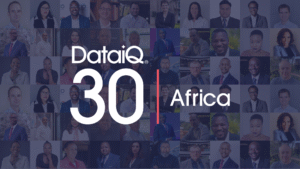1. Treat migration as transformation, not a “lift and shift” exercise
Migrating clutter means carrying your old performance and governance issues into a new environment. Treat the move as a strategic clean-up, not a technical copy-over.
Use Microsoft Fabric migration to rebuild cleanly and simplify what’s been over-engineered. Resist the urge to “lift and shift.” Before moving a single dataset, audit every dashboard, workspace and model. Delete duplicates, retire unused content and clarify ownership.
2. Separate migration from adoption
Moving workloads into Microsoft Fabric is only the first step. Without adoption planning, Fabric risks becoming another technical silo. The point is not to move data faster, but to get the business using it better.
Adoption means bringing users, governance and business processes with you. Migration can be run as an IT-led programme, but adoption must be a cross-functional effort with business data owners and stewards visibly involved.
3. Right-size and isolate capacity early
Fabric’s unified capacity model is powerful but easy to overload. A single heavy workload can bring an entire tenant to a standstill. Proactively managing capacity will protect performance and credibility with business users. Do so by establishing separate capacities for data engineering and BI consumption, with clear owners, monitoring and alerting.
4. Build governance around people, not tools
Tools like Purview are enablers rather than solutions with clear ownership the key to turning governance from a compliance task into a productivity tool.
Start by defining who owns what: domains, data products, and decision rights. Formalise these roles before automating catalogues or lineage.
5. Make cost a design principle
Architecture choices are also commercial choices. Owning that trade-off early prevents budget shocks later.
Decide upfront how you will balance cost and complexity. For example, Fabric Link offers simplicity but higher storage costs; Synapse Link via ADLS adds setup effort but lowers cost. Build financial scenarios into design reviews and involve finance partners early.
6. Clean before you connect
Microsoft Fabric’s unified environment tempts teams to connect everything, fast but standardisation is key to success: naming conventions, consistent semantics, and rationalised data models need to be in place before integrating.
A smaller, better-structured dataset avoids complexity and will outperform a vast, inconsistent dataset every time.
7. Use migration as a catalyst for business accountability
Fabric’s architecture assumes shared responsibility between business and IT. Without that ownership shift, it simply codifies old bottlenecks in a new interface.
Use the spotlight of a platform migration to clarify who owns which data domains and outcomes. Use data owners who are accountable for quality and value, not just access.
8. Separate speed from value
Business partners need to see outcomes, rather than outputs. Storytelling and transparency turn delivery speed into perceived value.
Fabric can accelerate delivery, but pace alone doesn’t create trust. Report usage, track adoption metrics and communicate impact regularly. Share stories of improvement, not just deployment counts.
9. Build literacy alongside pipelines
A faster platform is only valuable if the business can understand and apply the insights it produces. Culture is the multiplier of technical investment.
As Fabric democratises access to data, invest in literacy and “power skills”; storytelling, critical thinking and stakeholder engagement across the business.
10. Plan your governance and delivery rhythm
Momentum often fades quickly after migration. A cadence of review keeps Fabric aligned with changing business priorities.
Create a repeatable process for introducing new workloads, monitoring usage and retiring legacy systems. Use Fabric rollout as an opportunity to define quarterly reviews of capacity, cost and adoption health.
The bigger picture
Microsoft Fabric’s strength lies in convergence: one environment for engineering, analytics and governance. But convergence needs clarity. The organisations realising value are those that use migration to simplify, assign ownership, align cost to value, and make the business an active participant in the journey.
These recommendations draw on insights shared in a confidential DataIQ peer exchange between senior data and AI leaders. DataIQ clients can explore more practical takeaways via the DataIQ Hub





